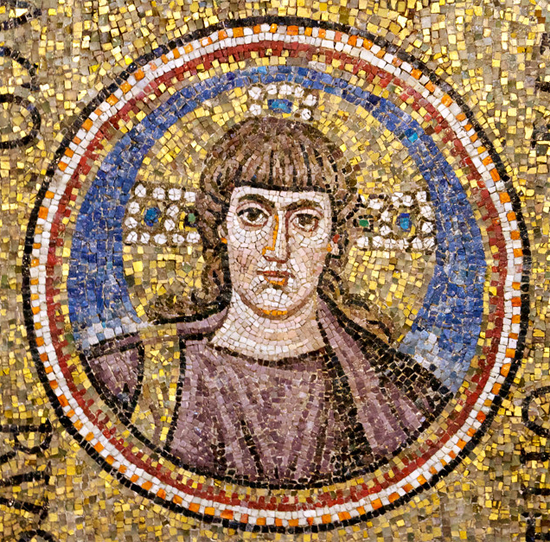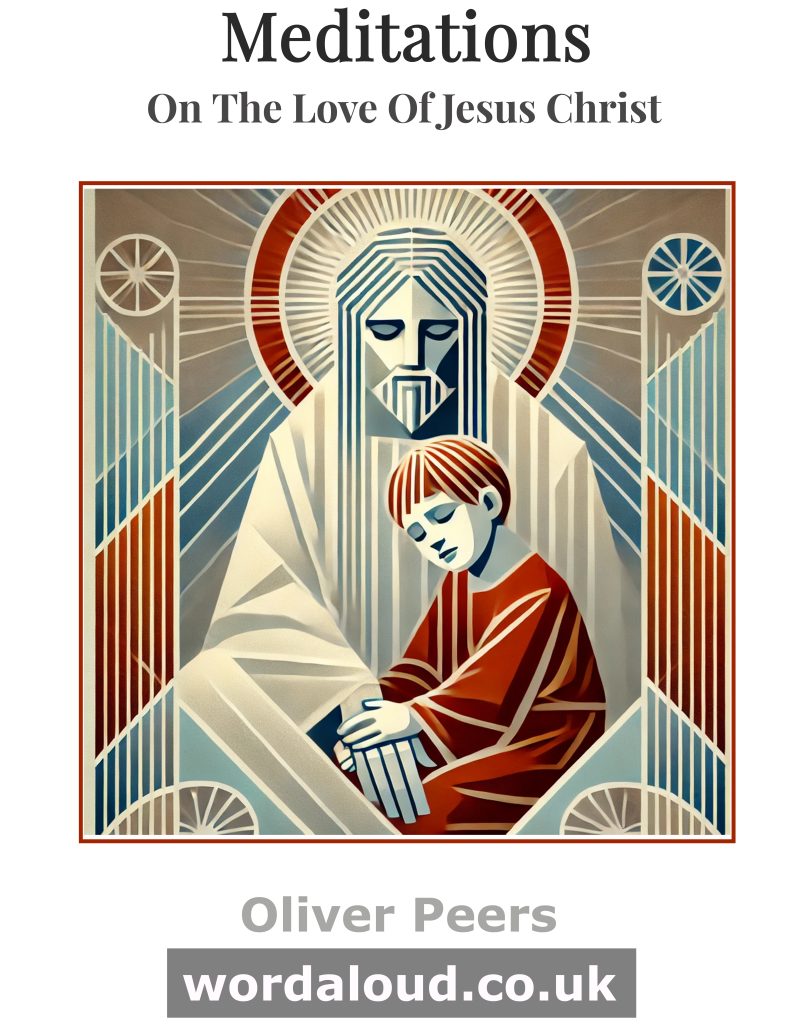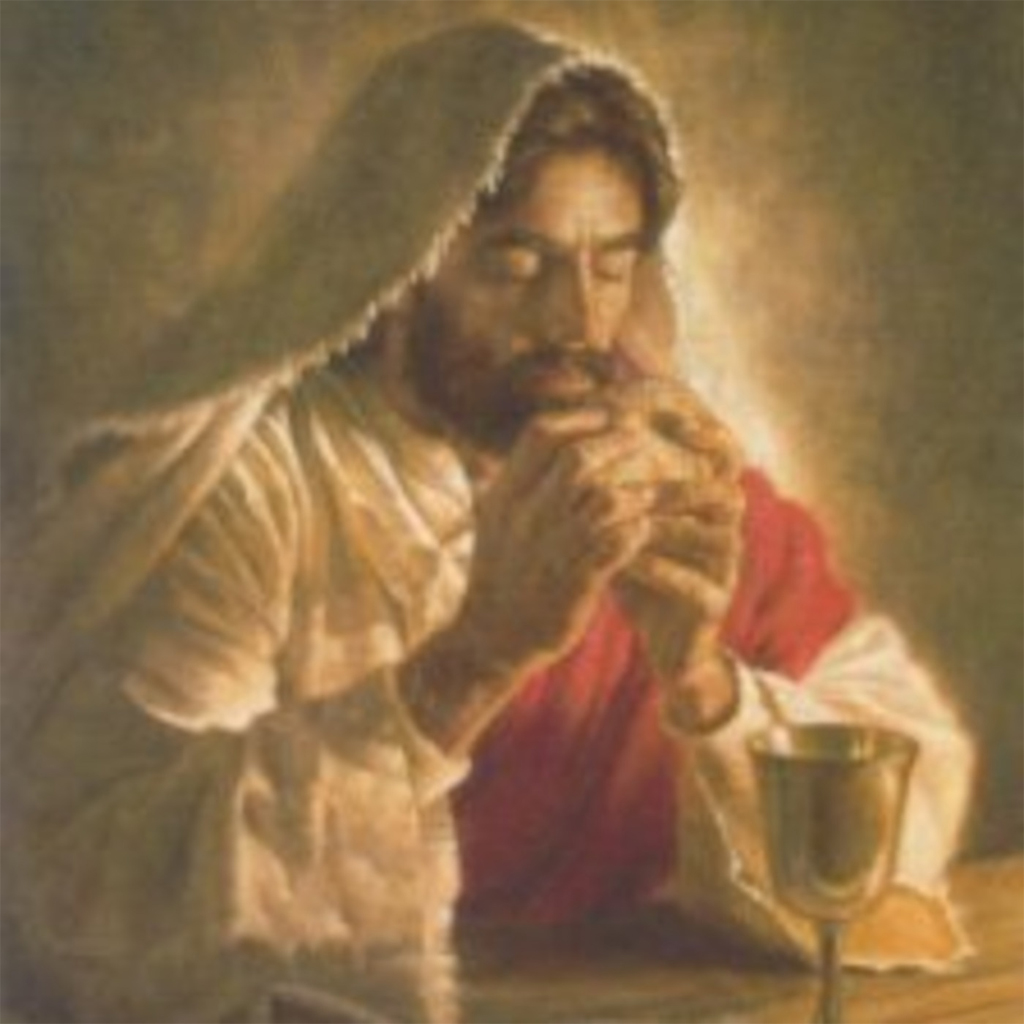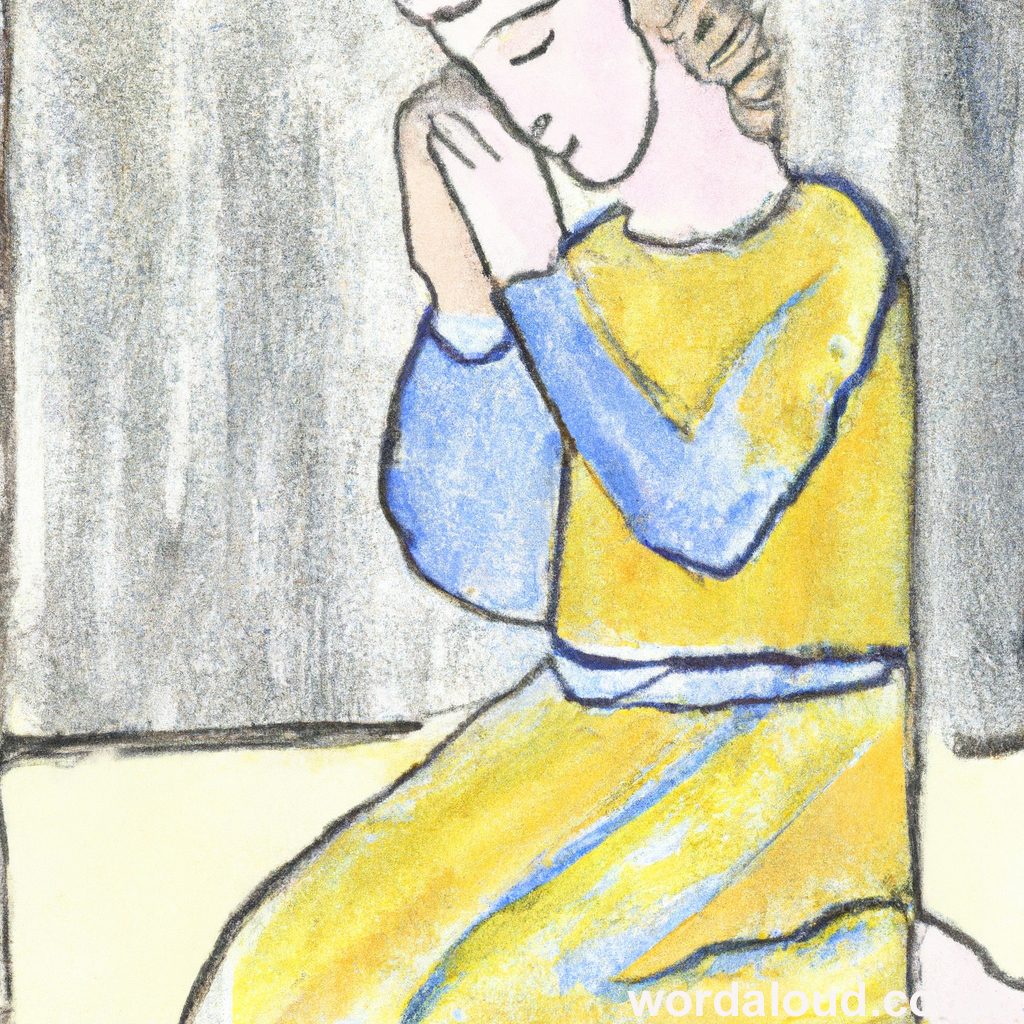The image is an early Christian depiction of Jesus as a beardless Roman youth.
A1. While God ‘can be known with certainty from created reality by the light of human reason’[1], He additionally chooses, ‘out of the abundance of His love’ (DV2), to reveal Himself to humanity. From the start God revealed himself to Adam and Eve, ‘[p]lanning to make known the way of heavenly salvation’ (DV3). After the fall, God has continued to reveal himself in history. He called Abraham, then taught the people of Israel through the patriarchs and through Moses and the prophets, that He is the one true God and to await the Saviour. Divine revelation was progressive through time, the Old Testament presenting ‘incomplete and temporary’ (DV15) understandings of God. The Old Testament prepares the way.
Christ is the fullness of revelation. ‘To see Jesus is to see the Father.’ (DV4, citing John 14: 9) ‘Jesus perfected revelation… making Himself present and manifesting Himself: through His words and deeds, His signs and wonders, but especially through His death and glorious resurrection from the dead and final sending forth of the Spirit of truth.’ (DV4) The ‘Christian dispensation’ (DV4) is definitive, until Christ’s coming at the end of time.
Revelation is transmitted through Sacred Scripture and Tradition. The Apostles ‘left bishops as their successors’ (DV7), handing over to them the teaching authority. Tradition has developed in the Church with the aid of the Holy Spirit. It is a task of the Church to maintain the ‘sure gift of truth’ (DV8) of the living tradition, and to do so unerringly. This continual work, of prayer, with the Holy Spirit guarantees that the truth of Revelation will be maintained through all time.
A2. All Scripture is divinely inspired. However, ‘God speaks in Sacred Scripture through men in human fashion’ (DV12). Consideration of context becomes important, ‘in order to see clearly what God wanted to communicate’, through the ‘meaning the sacred writers really intended’ (DV12). The sacred writers’ real intentions are seen as being distinct from context.
Textual context is important, as any particular passage of the Bible relates to the ‘content and unity of the whole of Scripture’ (DV12). Furthermore, consideration of literary context acknowledges the role played in the expression of meaning by literary form. ‘For the truth is set forth and expressed differently in texts which are variously historical, prophetic, poetic, or of other forms of discourse.’ (DV12) The literary form, itself particular to time and place, is a determinant of meaning as communicated.
In terms of historicity of text, of historical and literary context, ‘due attention must be paid to the customary and characteristic styles of feeling, speaking and narrating which prevailed at the time of the sacred writer.’ (DV12) Characteristic modes of social exchange are also to be considered as determinants of expression. Additionally, the wording suggests that such aspects of context have furthermore determined meaning as communicated, and as initially expressed, while distinguishing such meaning from different and unexpressed orders of intended meaning, held to exist a priori to language and history at the level of the human writer as with God.
Such considerations necessitate interpretation of Scripture. It is for the Church to ensure the authenticity of such interpretation. Such is the authority possessed by the Church through succession. We may infer that it is held as a given that the intended meanings of the sacred writers are accessible, while, set against this, in their fullest truth it may never have been possible to have expressed them humanly.
B1. The Gift of Scripture[2] offers a response to Dei Verbum (DV). It celebrates the ‘nourishment and strength’ we receive from Scripture. It considers revelation, and the handing down of salvific truth through Tradition and Scripture. It considers issues entailed in interpretation of Scripture, offers a survey of the Old and New Testaments, and considers the role of the Bible today, in liturgy, preaching, prayer and catechesis.
Referring to DV11, the document sees God’s adaptation of His word ‘to our human situation’, His expressing Himself ‘in human language’, as a ‘challenge’ (GS13). The challenge is that Scripture is both the inspired word of God, and that ‘[n]ot to recognise the human features of Scripture would lead us into fundamentalism[, which] approach has little interest in the historical origins and development of Scripture’. The truth of the Bible ‘is to be found in all that is written down “for the sake of our salvation” (Dei Verbum 11)’ (GS14, emphasis added). The document develops this thought in such a way as could be argued to define truth, independently of other considerations, as that which is for the sake of our salvation. ‘We should not expect total accuracy from the Bible in other, secular matters. We should not expect to find in Scripture full scientific accuracy or complete historical precision.’ (GS14)
Developing this thought, the document sees the intentions of the human authors of Scripture as being significant and as existing apart from, or prior to, such as may be analysed with ‘the historical-critical method’. The implication seems to be that such human intentions lay outside of and unconditioned by history and time. The document expresses the presence of ‘imperfect and time-conditioned’ (GS19) elements within Scripture, citing DV15, where the phrase we have in English is ‘incomplete and temporary’. To reject the imperfection of the language of Scripture is a fundamentalist stance and is dangerous (GS19). It is claimed: ‘Dei Verbum confirms that such questions should be asked of the whole of Scripture (Dei Verbum 12).’ (GS17)
The document offers a summary of the composition of the Old Testament and a reading of it as a developing and imperfect understanding of God, which tends toward the revelation of Jesus. It is said of the opening chapters of Genesis, that ‘they may contain some historical traces’, a reasonable inference being that they probably do not. These chapters ‘set the tone for reading the entire Bible’ (GS 28). The story that follows of the calling of Abraham through to the entrance to the promised land, nevertheless contains ‘much that remains valid for Christians’ (GS31), even as ‘primitive ideas about God’s demands’ (GS32) must be balanced by ‘truths’ of later Scriptures. The prophets especially are called to speak the truth to Israel.
The document considers the process of composition of the Gospels, recognising differences together with complementarity, as they provide a truthful account of Jesus (GS43-44), which truthfulness may or may not be in terms as previously defined in the document. A brief summary is offered of each, including considerations of purpose, audience and context. Relations between Christians and Jews are an issue, as they are through Acts and the writings of Paul. Indeed, this is to become a significant aspect and call to act of our present day.
Finally, the document considers the role of the Bible in the Church and in contemporary society, for example as a catechetical and ecumenical resource. There is a sense of the centrality of Scripture, and of the need to honour the word, for example in reading during Mass, whereby those laity taking part in this ministry should be afforded the opportunity of days of spiritual reflection (GS76). Joy is expressed that so much more of Scripture has been included within the liturgy in recent decades (GS74).
B 2. Sacred Scripture is a gift which is continually offered to us in the Church. This is to say that the Church and Scripture operate conjointly in our lives, bringing hope, unity, nourishment, strength, love – all such gifts of which we find ourselves so in need in the contemporary milieu. The Bible is a living text. One function of this truth of Scripture is that our sense of the meaning of God’s word changes and develops as do we through time, while the truth of God is constant. We look to Tradition to assist our reception of and engagement with the gift of Scripture. Similarly, as a Church we look to be continually renewed by God’s word.
At the heart of Scripture lies the truth of God’s revelation of Himself to humanity. This gift of revelation has been completely gratuitous, just as was God’s creation of humanity. Nor was the gift given once and for all, to our first parents, Adam and Eve. Rather, and following the fall, God has given himself to humanity time and time again, sustaining history. Scripture is a record of the history of salvation, through which we come to know more of God’s love for us. This very knowledge is gift. All leads to the ultimate gift of Christ – the gift of revelation of Christ as the Word Incarnate, and the gift of the cross. Our sense of Christ’s Incarnation and sacrifice cannot be disentangled from Sacred Scripture.
Our sense of Scripture as gift can similarly not fail to acknowledge the human work of the writers of Scripture. We are asked to celebrate the drawing together of many and various texts and traditions as the inspired word of God was humanly crafted. We may think of the many and various creative additions and redactions as the Hebrew canon found shape. We may think of the lives of the Apostles and of the writers of the Gospels, and of the ways in which the incredibly difficult lives they led are expressed in Gospel truth. We may think of all those who have been individually responsible for bringing the Bible to us today.
Finally, we should consider our own role in presenting the Bible to others as a gift. Where we ask for renewal, perhaps of the Church or of society, where we seek to evangelize, when we welcome others into the Church, perhaps the young or people drawing to us from other faiths or from none, we can look to the Bible as a sure and powerful expression of truth and Christian faith, a rich source of blessing for others’ lives as for our own. It especially behoves those of us who feel called to priesthood to embrace all the many and beautiful texts of the Bible and to live our lives in absolute proximity to God’s word, nurturing ourselves with the gift of Scripture so that we may be best able to offer that gift to others.
B 3. We accept what we have in Scripture as Revelation of the Triune God through faith, trust and reason. Scripture has been handed down to us, with and through Tradition, as a true account of the life, death and resurrection of Christ. The Gospels tell us about the Trinity. They tell us what Jesus said about Father, Son and Spirit. The New Testament account develops in the early Church so closely in time to the life of Jesus. Why should the writers be lying to us? Why should Paul have given his life to Jesus? Why should anyone have believed with such fervency that a man hanging on a cross was God Incarnate, unless through what they had experienced, that is to say through revelation, it had been demonstrated and they convinced that this was true.
Through the Old Testament, the Bible draws us toward the recognition of Jesus as the Son. Our fallen state is initially expressed in the stories of Genesis, and then repeatedly made manifest in the history of the Jewish people and of God’s dealings with man. We might regard much of what is written as ahistorical. There is a creativity in telling and adapting old tales. The concept of history is flexible. All, however, expresses man’s calling by God. The Torah, the histories, the prophets ready our way to Christ, enabling us to understand his milieu and so him more completely. The submission we make is not unreasonable. Our reasoning sense of Scripture compels our faith.
[1]Vatican Council II. Dei Verbum. Dogmatic Constitution On Divine Revelation Of The Second Vatican Council. (Promulgated by Pope Paul VI, November 18, 1965.) Henceforth: DV. DV6
[2] The Catholic Bishops Of England, Wales And Scotland. The Gift Of Scripture. (London: Catholic Truth Society, 2005.) Henceforth: GS.








